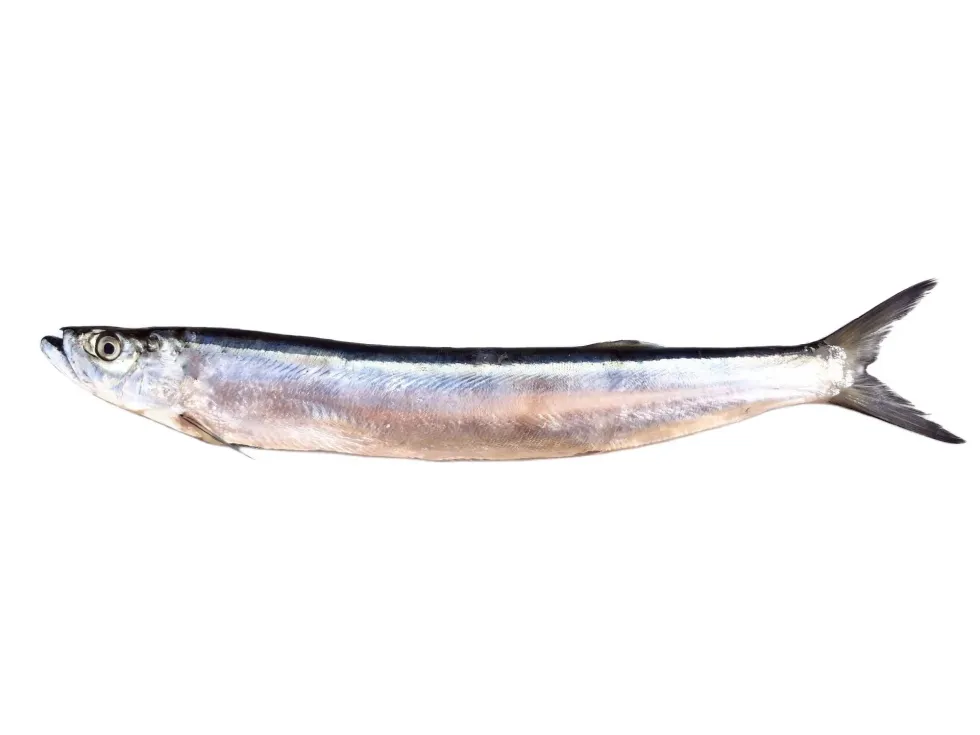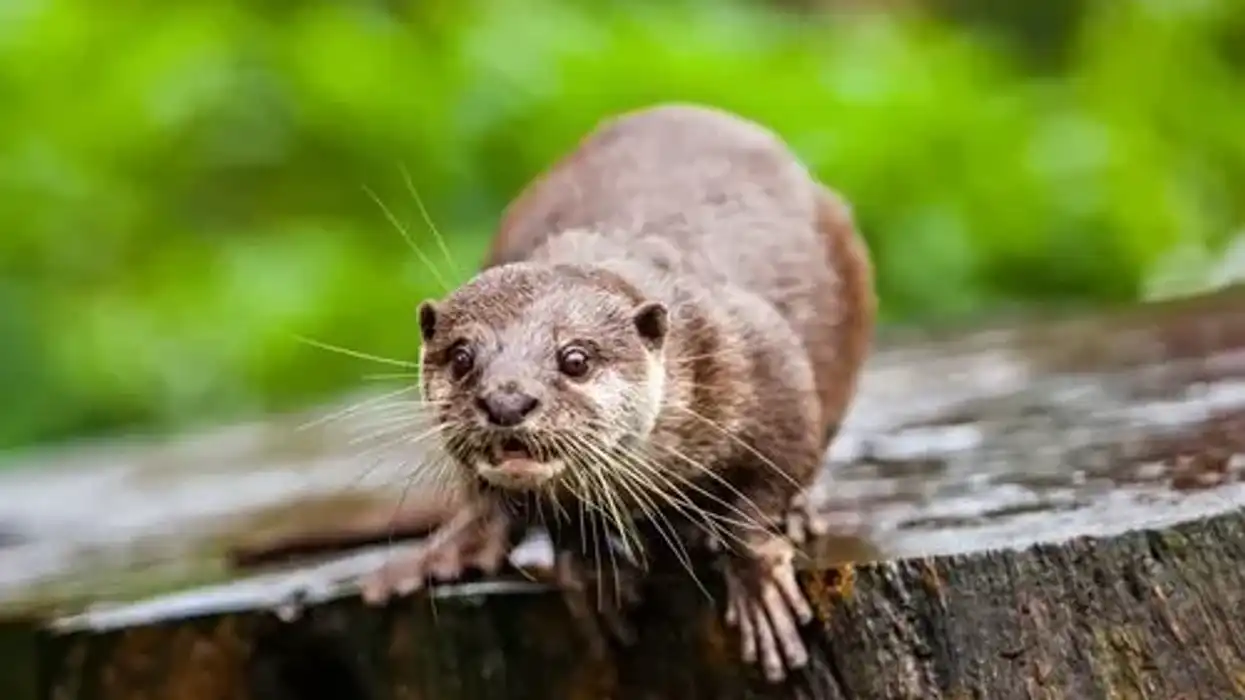Wolf herring is a fish species of bony marine fish belonging to the family Chirocentridae and the order Clupeiformes consisting of two fishes dorab wolf-herring (Chirocentrus dorab) and whitefin wolf-herring (Chirocentrus nudus). They are native to the Indo-Pacific Ocean.
These fish are extensive and voracious predators. The body is long and elongated. They are dark bluish in color above and bright silver in color on their sides and the region below. They are adorned with bright blue color above and silvery color below.
They have long elongated bodies and jaws that have sharp, long, dagger-like teeth that help them in praying on smaller fish. Wolf herrings are widely distributed in India, north to southern Japan as well as northern Australia and along both east and west coast and hence are in a good local demand of food fishes in the north.
They are found in marine as well as brackish water bodies.
Learn more about the family, feeding habits, and more of these fishes, and also check out channel catfish facts for kids and chum salmon facts for kids.
Wolf Herring Interesting Facts
What type of animal is a wolf herring?
Wolf herring is a kind of coastal fish belonging to the Chirocentridae family. They are marine in habitat and are exclusively found mostly in the Indian Ocean and in the Western Pacific to Southern Japan and south to northern Australia. The white fin wolf herring and dorab wolf herring are found in a similar range of habitats.
What class of animal does a wolf herring belong to?
The wolf herring belongs to the Actinopterygii class of the Animalia kingdom. They also belong to the order Clupeiformes and the family Chirocentridae.
How many wolf herrings are there in the world?
The exact number of wolf herrings is unknown.
Where does a wolf herring live?
They are found in the tropical and subtropical marine and brackish waters of the Indo-Pacific and throughout the warmer coastal waters. It resides in the range of warm coastal waters of the Red Sea and East Africa to the Solomon Islands, which is north to southern Japan and south to northern Australia.
What is a wolf herring's habitat?
Wolf herring is a kind of fish species that is pelagic in marine and coastal waters from the shore to about 393 ft (120 m) in depth. It lives both in marine and brackish waters.
Who do wolf herrings live with?
The wolf herring survive in small schools of its own species. It is possibly not fit to survive with groups of other smaller fish due to its predatory nature and its access to smaller fish and crustaceans to prey on.
How long does a wolf herring live?
The average lifespan of a wolf herring is about six to eight years.
How do they reproduce?
The species of dorab wolf herring reproduce by the process of spawning. The mating processes are possibly similar to those of other members of the Chirocentridae family. These fish generally disperse pelagic eggs, which are fertilized, and then they drift through the current waves or sometimes adhere to the substrate.
Blackfin dorab wolf-herrings are said to breed once a year. During this process, they produce numerous offspring. The process of spawning in Blackfin wolf herrings varies by location and atmosphere. Spawning generally occurs from the month of April to June, but in some areas, spawning can occur as late as October. Little is known about the wolf herring eggs.
What is their conservation status?
Both species of wolf herring are classified as of Least Concern in the IUCN Red List of Threatened Species and hence are not yet in the range of being endangered.
Wolf Herring Fun Facts
What do wolf herrings look like?

The body of a wolf herring is a kind of fish with an elongated body that is also strongly compressed. It also exhibits a keen and sharp belly on which scouts are absent.
The members of the family Chirocentridae are characterized as long herrings. The body and the head are covered with small cycloid scales which are known to be shed quite easily and very often.
The mouth and head are relatively large and are directed upwards. The posterior margin of the maxilla usually fails to reach or, in rare cases, just reaches the preopercular margin.
There are large canine teeth that are present in both jaws. The two canine teeth are present on premaxillae and are pointing anteriorly. Gill rakers, around one to four and on the upper limb are present on the first arch. Around 10-16 rakers are attached to the lower limb.
The dorsal fin is located posterior to vertical through the middle of the body. The anal-fin originates about under the dorsal-fin origin and the anal-fin base is about twice or more than twice in the length of the dorsal-fin base.
The silvery and black dorsal fins are larger than the pectoral fins while the Pelvic fins are very small, accumulating a total of seven fin rays. The anal fin is hyaline in nature, except in that of larger specimens, which also have some black pigment on the anterior part of the anal fin.
The pectoral and caudal fins are dark gray in color, acquiring a yellow tinge on preservation.
How cute are they?
Dorab wolf herring fish are voraciously predatory in nature and hence do not come under the category of cute. The shape of a wolf herring's teeth is sharp and dagger-like which adds to their dangerous looks. The fish also has access to bright silvery shades on its flanks.
How do they communicate?
Blackfin wolf herrings, like other fishes, communicate through motions, gestures, and swimming patterns.
How big is a wolf herring?
A wolf herring is around 49 in (120 cm) long. They are possibly smaller in length than a commonly found bigmouth buffalo fish but way bigger than an ayu fish.
How fast can a wolf herring swim?
The exact speed of the wolf herring is unknown but since it is a pelagic predatory fish, it is extremely fast in nature as they swim in an upward motion in order to break the surface with its head and search for their prey. The speed and efficiency of these fish help them to catch their prey easily.
How much does a wolf herring weigh?
The average weight of a dorab wolf herring is about 0.3-0.4 lb (170-200 g).
What are the male and female names of the species?
The male and female wolf herrings (Chirocentrus dorab) do not have sex-specific names.
What do they eat?
The wolf herring feeds primarily on smaller fish (mainly clupeids and engraulids) although they are also fond of crustaceans like krill and shrimps and other invertebrates. Blackfin wolf herrings are also a common predator of sardines.
Are they dangerous?
Yes, the wolf herring is highly predatory in nature and dangerous for small fish species and other invertebrates and sea creatures. Although they are not known to be dangerous to humans.
Would they make a good pet?
The predatory nature of the wolf herring fish does not allow them to live in communal tanks or fisheries with other fishes, otherwise, it will prey on smaller fishes and fish larvae.
Did you know...
Chirocentrus dorab gets its name from the Greek word 'cheir' meaning 'hand' and 'kentron' meaning 'sting'. Whereas dorab is derived from the Arabic word 'darrab' which is a corrupted form of the word 'durubb' which is the name of goldfish in Arabic. It is also known as the Arabic name 'lisan' which means 'tongue.'
What are the different types of wolf herrings?
The black marks on the dorsal fin of the Chirocentrus Dorab distinguish it from its closest relative of this species, the whitefin wolf herring. Both the blackfin wolf herring and the whitefin wolf herring are an important part of local mixed tropical species fish catches. The blackfin and whitefin wolf herring are also mostly included in small-scale fisheries.
What adaptations do wolf herrings have?
The smooth wolf herring species have accessed the ability of phenomenal listening due to the presence of air bubbles present inside their inner ears. This adaptation mostly helps them to catch their prey and in the feeding of smaller species and crustaceans in the water.
Another factor that helps them in tearing and puncturing their prey throughout and into small pieces is their sharp canine teeth.
These fish also get attracted to light at night and hence used as baits to catch many small fishes.
Is the Dorab wolf herring edible?
Yes, the dorab wolf herring (Chirocentrus dorab) is commonly known as a commercial species and caught throughout their range which is sold fresh, dried, salted, or frozen and widely consumed. Wolf herring range is the most popular kind of marine species whose fresh meat is used to make fish balls.
It is a delicacy in many commercial countries and is extensively used in many local recipes in Japan, India, etc, due to its tender and smooth texture.
Wolf herring taste sweet and soft too when fresh. It is also widely accessed as bait for fishing threadfins and other commercial fish and is also included in small-scale fisheries.
Here at Kidadl, we have carefully created lots of interesting family-friendly animal facts for everyone to discover! Learn more about some other fish from our black sea bass facts and sandperch facts pages.
You can even occupy yourself at home by coloring in one of our free printable Atlantic herring coloring pages.









